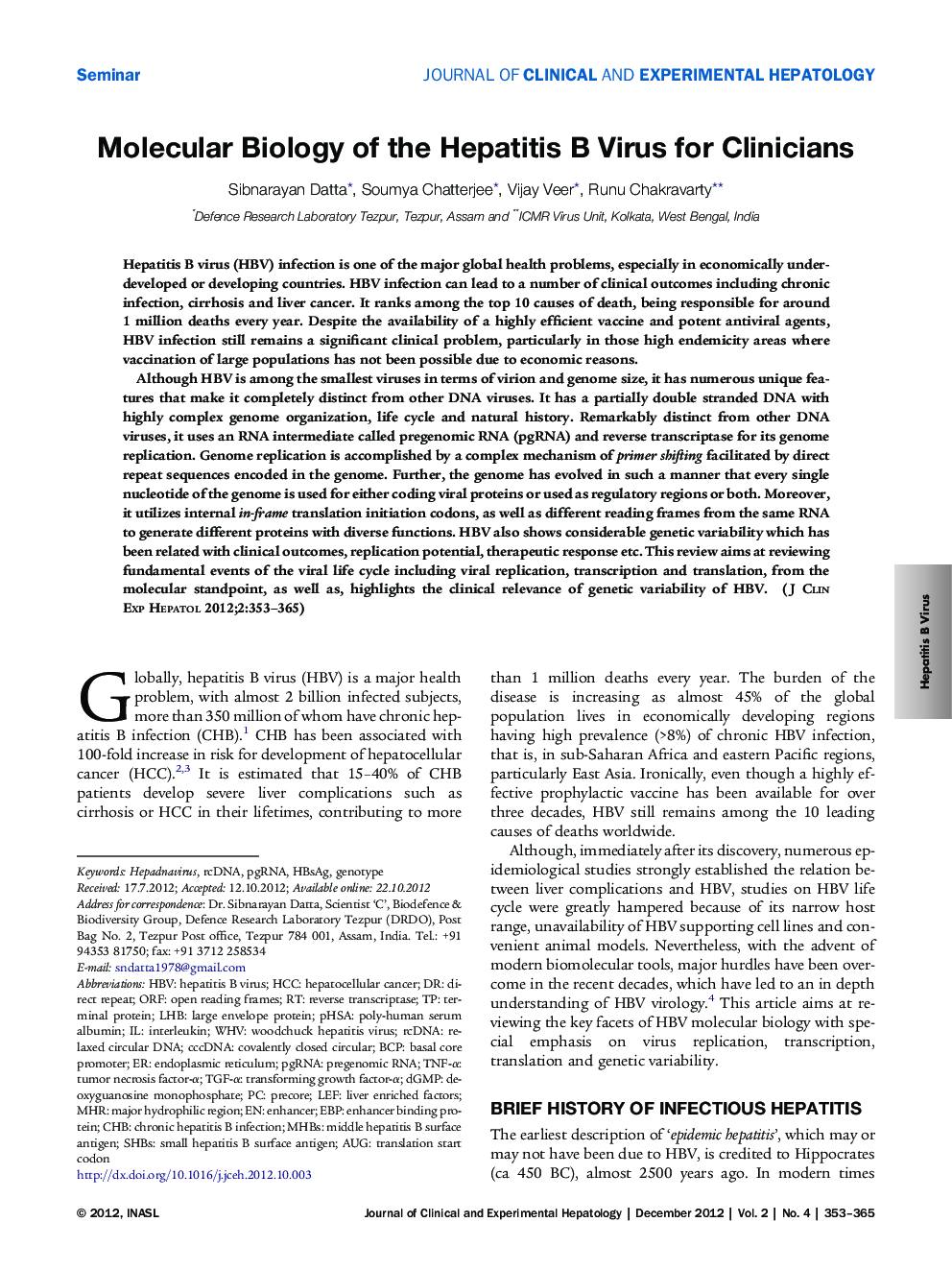| Article ID | Journal | Published Year | Pages | File Type |
|---|---|---|---|---|
| 3338714 | Journal of Clinical and Experimental Hepatology | 2012 | 13 Pages |
Hepatitis B virus (HBV) infection is one of the major global health problems, especially in economically under-developed or developing countries. HBV infection can lead to a number of clinical outcomes including chronic infection, cirrhosis and liver cancer. It ranks among the top 10 causes of death, being responsible for around 1 million deaths every year. Despite the availability of a highly efficient vaccine and potent antiviral agents, HBV infection still remains a significant clinical problem, particularly in those high endemicity areas where vaccination of large populations has not been possible due to economic reasons.Although HBV is among the smallest viruses in terms of virion and genome size, it has numerous unique features that make it completely distinct from other DNA viruses. It has a partially double stranded DNA with highly complex genome organization, life cycle and natural history. Remarkably distinct from other DNA viruses, it uses an RNA intermediate called pregenomic RNA (pgRNA) and reverse transcriptase for its genome replication. Genome replication is accomplished by a complex mechanism of primer shifting facilitated by direct repeat sequences encoded in the genome. Further, the genome has evolved in such a manner that every single nucleotide of the genome is used for either coding viral proteins or used as regulatory regions or both. Moreover, it utilizes internal in-frame translation initiation codons, as well as different reading frames from the same RNA to generate different proteins with diverse functions. HBV also shows considerable genetic variability which has been related with clinical outcomes, replication potential, therapeutic response etc. This review aims at reviewing fundamental events of the viral life cycle including viral replication, transcription and translation, from the molecular standpoint, as well as, highlights the clinical relevance of genetic variability of HBV.
